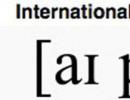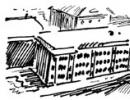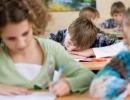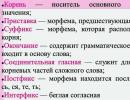Deadly hell. "I hate physic!" Algebra test after cross-country
Rosobrnadzor in 2018 will check the quality and safety of physical education lessons in Russian schools, said the head of the department, Sergei Kravtsov, last week. A large-scale test has been brewing for a long time: news bulletins are constantly full of reports of children injured in physical education. More than 200 schoolchildren died during the course of the year alone.
Frightened deuce
211 deaths of children in physical education classes were recorded in 2016, in October, the Minister of Education and Science Olga Vasilyeva. In the same month, a third-grader from Krasnoyarsk died during a class: a 10-year-old boy became ill during
RELATED MORE
jogging. Both the school doctor and the ambulance doctors came to the rescue, but they saved him.
Everything went well in the Murmansk school, but in the event of a serious danger, it could have ended tragically. The schoolboy fell from the Swedish wall, the teacher decided to inspect. As the prosecutor's office found out, the health worker was not on site at that moment. The teachers did not see the damage and simply sent him home. As a result, the child has a closed shoulder fracture.
The most resonant was the case that occurred in the Trans-Baikal school. At a physical education lesson at school No. 42 in Chita, a third-grader broke her spine: for a month the girl was chained to the bed, she could not sit for another six months. It turned out that she performed unbearable somersaults for herself, afraid of getting an unsatisfactory grade. Fizruk claimed to have acted.
Anna Kuznetsova, Commissioner for Children's Rights under the President of the Russian Federation, stood up for the child. “The teacher is primarily responsible for the child during a lesson at school,” the Ombudswoman said. In physical education classes, health, safety, and certainly not grades, should be at the forefront, she emphasized: “If a child cannot perform some exercise, you don’t need to force him, let alone intimidate him with deuces.” After this incident, the initiative group turned to the head of the Ministry of Education with a request for a deuce in physical education: how can one generally evaluate a child’s academic performance by the physical data?
Not on the shoulder
The standards established for physical education lessons do not correspond to the physical capabilities of modern Russian schoolchildren. This conclusion was made by specialists from the Research Institute of Hygiene and Health Protection of Children and Adolescents of the Ministry of Health, who are among the capital's children. About 87% of schoolchildren find it difficult to comply with the standards, scientists have found.
For example, more than half of primary and secondary school students have difficulty pulling themselves up, a third of schoolchildren cannot do push-ups a set number of times. The more difficult it is to engage in, the less children and adolescents want to appear in physical education. “Only 13.5% of them skip classes more than three times a month,” the presenter noted. Researcher Research Institute Anna Sedova. The conclusions drawn from a survey of Moscow schoolchildren are also relevant for other regions, the research institute is confident.
The standards, according to which schoolchildren are given fives, are designed for children who fall into the main group for health reasons. If we take into account the data of Rospotrebnadzor, there are not so many of them. According to information for the fall, only 12% of the total number of children in Russia. Over the decade, schoolchildren began to detect twice as many chronic diseases: they are diagnosed in 60% of high school students.
The head of the Ministry of Education and Science Olga Vasilyeva, commenting on the case in the Chita school, emphasized that children are often injured in physical education classes, including due to the fact that teachers do not know about their state of health. And getting medical cards in hand is impossible due to the provisions of the law on the protection of personal data. Since January 1, 2018, Russian schools have taken a detour to medical secrecy: in accordance with the order of the Ministry of Health, they must receive all the necessary information about the state of health of students following a medical examination. The doctor collects a kind of medical record, determines the group for sports and sends all prescriptions to the school doctor or nurse.
“Information will not go beyond medical staff,” the Ministry of Health emphasized. - For example, knowing that there is a child with a certain diagnosis, they can buy additional drugs in the first-aid kit. Or they won’t give a medicine to which the child is allergic.”
The effectiveness of this measure is debatable, given that most schools do not have health workers. The Research Institute of Hygiene and Protection of Children and Adolescents of the Ministry of Health estimated that the provision of medical workers in school and preschool institutions is 60%, and nurses - 77%. At the same time, one specialist, most often working at several rates in different schools, is torn into several hundred children. In Yakutia, for example, one doctor deals with 5,000 children. Health workers often work in shifts in one or another school, which means that at the time of an emergency, it simply may not be in place. Many specialists left “school medicine”, including due to the fact that they were not covered by additional payments that are received, for example, by employees of children's clinics.
Deputies of the State Duma are now preparing a bill that will spell out the concept of "school medicine". Legislators, in particular, want to oblige parents to report health problems in children and introduce first aid courses for teachers. The head of the parliamentary committee on health Dmitry Morozov, that one way or another it is planned to prescribe in the document that health workers should be both in schools and in kindergartens.
Voluntary healthy lifestyle
The sad statistics on the number of deaths and injuries in physical education classes creates a vicious circle. On the one hand, classes are dangerous, and on the other hand, without physical activity, it will not be possible to improve the health of children. To kid school age it is necessary to actively move at least an hour a day, according to the World Health Organization (WHO).
Minimizing health risks is just one step. An equally important task is to ensure that children enjoy going to physical education. Experts from the Research Institute of Hygiene noted that schoolchildren want variety in the classroom. Most of the respondents, for example, would like to leave more time for sports games.
The authorities are working on developing a program that allows the child to develop physical abilities, not just squats, push-ups and running. An example is the “Sambo to School” project, within the framework of which the third hour of physical education in a number of schools was replaced with a lesson in this type of martial art. For seven years, the geography of the project has expanded from Moscow to about half of the Russian regions. According to the president of the All-Russian and European Sambo Federations, Sergey Eliseev, 180 schools are participating in the project, and almost 450 more have applied. In 2018, in the plan of the federation, to introduce sambo lessons to thousands more educational institutions.
Teachers were wary of the innovation: physical education teachers are already afraid of injuries to their wards like fire, and in martial arts classes based on combat techniques from the folk types of wrestling of the republics of the USSR, the risks are even greater. However, the developers of the program reassured them: schoolchildren will be taught the principles of self-defense, and not power techniques. And if a child shows good results, he will be recommended to do SAMBO at a more advanced level separately. “We don’t teach wrestling in physical education classes, we teach children how to fall correctly, how to free themselves from a grip, how to stop a bully on the street. Sambo is a kind that gives confidence in life,” Elissev explained.
For those who do not want to go to sambo, other options may appear. The city authorities, for example, have considered developing school classes in rock climbing, football and cycling. Such diversity, however, is wary of the Ministry of Education. “Sambo, judo, golf and a lot of other things that are absolutely not needed in the course of the lesson have appeared in our physical education lessons today,” said Tatyana Sinyugina, deputy head of the department. During extracurricular time - please, and during the lessons - it is unacceptable. Sinyugina explained this position by the fact that in many regions such innovations play into the hands of influential sports organizations.
There is another reason - before providing diversity, it is necessary to normalize at least a standard physical education set for schoolchildren. In the meantime, he can only beat off the love of sports in children. Ivan Alypov, an Olympic medalist in cross-country skiing, came to this conclusion after watching a physical education lesson for Yekaterinburg schoolchildren. “How can you properly teach skiing in such conditions, on such a track, and make sure that children like it?” - wrote athlete in his Instagram, providing a post with a photo. And on it, schoolchildren are trying to master skiing in a city park, bypassing passers-by on a sidewalk barely covered with snow.
Frightened deuce
211 deaths of children in physical education classes were recorded in 2016, Education and Science Minister Olga Vasilyeva said in October. In the same month, a Krasnoyarsk third-grader died during a class: a 10-year-old boy became ill while jogging. Both the school doctor and the ambulance came to the rescue, but it was not possible to save him.
Everything went well in the Murmansk school, but in the event of a serious danger, it could have ended tragically. The schoolboy fell from the Swedish wall, the teacher decided to inspect. As the prosecutor's office found out, the health worker was not on site at that moment. The teachers did not see the damage and simply sent him home. As a result, it turned out that the child had a closed fracture of the shoulder.
The most resonant was the case that occurred in the Trans-Baikal school. At a physical education lesson at school No. 42 in Chita, a third-grader broke her spine: for a month the girl was chained to the bed, she could not sit for another six months.
It turned out that she performed unbearable somersaults for herself, afraid of getting an unsatisfactory grade. Fizruk claimed that he acted "according to the curriculum."
Anna Kuznetsova, Commissioner for Children's Rights under the President of the Russian Federation, stood up for the child. “The teacher is primarily responsible for the child during a lesson at school,” the Ombudswoman said. In physical education classes, health, safety, and certainly not grades, should be at the forefront, she emphasized: “If a child cannot perform some exercise, you don’t need to force him, let alone intimidate him with deuces.” After this incident, the initiative group turned to the head of the Ministry of Education with a request to cancel the deuces in physical education: how can one generally assess academic performance by the physical data of a child?
Not on the shoulder
The standards established for physical education lessons do not correspond to the physical capabilities of modern Russian schoolchildren. This conclusion was made by specialists from the Research Institute of Hygiene and Health Protection of Children and Adolescents of the Ministry of Health, who conducted a survey among children in the capital. About 87% of schoolchildren find it difficult to comply with the standards, scientists have found.
For example, more than half of primary and secondary school students have difficulty pulling themselves up, a third of schoolchildren cannot do push-ups a set number of times. The more difficult it is to engage in, the less children and adolescents want to appear in physical education. “Only 13.5% of them skip classes more than three times a month,” said Anna Sedova, a leading researcher at the research institute. The conclusions drawn from a survey of Moscow schoolchildren are also relevant for other regions, the research institute is confident.
The standards, according to which schoolchildren are given fives, are designed for children who fall into the main group for health reasons.
If we take into account the data of Rospotrebnadzor, there are not so many of them. According to autumn information, only 12% of the total number of children in Russia are absolutely healthy. Over the decade, schoolchildren began to detect twice as many chronic diseases: they are diagnosed in 60% of high school students.
The head of the Ministry of Education and Science Olga Vasilyeva, commenting on the case in the Chita school, emphasized that children are often injured in physical education classes, including due to the fact that teachers do not know about their state of health. And getting medical cards in hand is impossible due to the provisions of the law on the protection of personal data.
Since January 1, 2018, Russian schools have been admitted to medical secrecy in a roundabout way: in accordance with the order of the Ministry of Health, they must receive all the necessary information about the state of health of students following the results of a medical examination. The doctor collects a kind of medical record, determines the group for sports and sends all prescriptions to the school doctor or nurse.
The effectiveness of this measure is debatable, given that most schools do not have health workers. The Research Institute of Hygiene and Protection of Children and Adolescents of the Ministry of Health estimated that the provision of medical workers in school and preschool institutions is 60%, and nurses - 77%.
At the same time, one specialist, most often working at several rates in different schools, is torn into several hundred children. In Yakutia, for example, one doctor takes care of five thousand children. Health workers often work in shifts in one or another school, which means that at the time of an emergency, it simply may not be in place. Many specialists left “school medicine”, including due to the fact that they were not covered by additional payments that are received, for example, by employees of children's clinics.
Deputies of the State Duma are now preparing a bill that will spell out the concept of "school medicine". Legislators, in particular, want to oblige parents to report health problems in children and introduce first aid courses for teachers. Dmitry Morozov, the head of the parliamentary committee on health protection, emphasized that one way or another, it is planned to prescribe in the document that health workers should be both in schools and in kindergartens.
Voluntary healthy lifestyle
The sad statistics on the number of deaths and injuries in physical education classes creates a vicious circle. On the one hand, classes are dangerous, and on the other hand, without physical activity, it will not be possible to improve the health of children. A school-age child needs to actively move for at least an hour a day, according to the World Health Organization (WHO).
Minimizing health risks is just one step. An equally important task is to ensure that children enjoy going to physical education.
Experts from the Research Institute of Hygiene noted that schoolchildren want variety in the classroom. Most of the respondents, for example, would like to leave more time for sports games.
The authorities are working on developing a program that allows the child to develop physical abilities, not just squats, push-ups and running. An example is the “Sambo to School” project, within the framework of which the third hour of physical education in a number of schools was replaced with a lesson in this type of martial art. For seven years, the geography of the project has expanded from Moscow to about half of the Russian regions. According to the president of the All-Russian and European Sambo Federations, Sergey Eliseev, 180 schools are participating in the project, and almost 450 more have applied. In 2018, the plan of the federation is to introduce SAMBO lessons in thousands more educational institutions. Teachers were wary of the innovation: physical education teachers are already afraid of injuries to their wards like fire, and in martial arts classes based on combat techniques from the folk types of wrestling of the republics of the USSR, the risks are even greater. However, the developers of the program reassured them: schoolchildren will be taught the principles of self-defense, and not power techniques. And if a child shows good results, he will be recommended to do SAMBO at a more advanced level separately.
We do not teach wrestling in physical education lessons, we teach children how to fall correctly, how to free themselves from a grip, how to stop a bully on the street. Sambo is a kind that gives confidence in life.
Sergey Eliseev
President of the All-Russian and European Sambo Federations
For those who do not want to go to sambo, other options may appear. The city authorities, for example, have considered developing school classes in rock climbing, football and cycling.
Such diversity, however, is wary of the Ministry of Education. “Sambo, judo, golf, and many other things that are completely unnecessary within the framework of the lesson, have appeared in our physical education lessons today,” said Tatyana Sinyugina, deputy head of the department. During extracurricular time - please, and during the lessons - it is unacceptable. Sinyugina explained this position by the fact that in many regions such innovations play into the hands of influential sports organizations.
There is another reason - before providing diversity, it is necessary to normalize at least a standard physical education set for schoolchildren. In the meantime, he can only beat off the love of sports in children. Ivan Alypov, an Olympic medalist in cross-country skiing, came to this conclusion after watching a physical education lesson for Yekaterinburg schoolchildren.
“How can you properly teach skiing in such conditions, on such a track, and make sure that children like it?” - the athlete wrote on his Instagram, providing the post with a photo. And on it, schoolchildren are trying to master skiing in a city park, bypassing passers-by on a sidewalk barely covered with snow.
I frankly hated physical education at school and often skipped it. The monotony of these lessons was disheartening, the endless delivery of subsequently unnecessary TRP norms to anyone, irritated classmates who excelled, for example, in volleyball and therefore considered it necessary to reproach me, far from being carried away by this game, for missed serves, inability to jump high, lack of reaction ...
After they call you a couple of times, even if in the heat of the game, somehow you don’t want to delve into this process again and ask for “compliments”. Moreover, teenagers perceive any criticism too sharply, and insults uttered against them, they remember later all their lives.
Why am I saying all this? And besides, dear users, that over the years that have passed since my quite happy, in spite of everything, childhood, nothing has changed in terms of physical education! Schoolchildren also do not like this subject, trying by all means to “slope” it. Why?
Skiing at rush hour
Let's ask ourselves a question: why do we need physical education lessons at school? If in order to achieve results and pass “norms”, then for this kind of occupation there are sports schools and sections, sections of general physical development. And if for the general physical training and ensuring health, then why then all these goals, points, seconds? Not everyone has long legs to jump high and run fast, not everyone has an accurate eye to throw the ball into the basket, not everyone is easy to climb a rope ...
Stretching, flexibility, coordination of movements, the ability to swim (not for seconds, but for yourself), play sports (not for the result, but so that later you can drive the ball with friends for your own pleasure) or “sip iron” to increase tone and mood, that's what you need. And running around the hall for 45 minutes or cutting circles around the school stadium, endless relay races will discourage anyone.
The second aspect is the equipping of schools. Where are the large spacious halls, where are the sports equipment, locker rooms with showers? I will never forget how in the school where my son studied, they ordered to bring ... skis to physical education lessons in the winter. This school was considered of citywide importance, children went there from all over the city. Lessons start at eight in the morning. Go, therefore, had to in the rush hour. And then a child - with skis. Can you imagine a picture? The headmistress, who regularly collects voluntary-compulsory "contributions" from parents, reacted indifferently to claims from parents and the requirement to finally purchase the necessary sports equipment for the school. So this disgrace lasted several seasons.
By the way, about the lessons in the winter. What does it really look like? From the previous lesson, you trot in order to have time to change: jacket, hat-scarf, ski boots .... Usually it takes 10-15 minutes. After the lesson - also at a trot in order to be in time for the next lesson. Before that, again, it takes 10-15 minutes to change clothes. Yes, for another lesson, despite the frantic pace, you are still late and get a reprimand from the teacher. And then you sit, all sweaty, not yet recovered from the ski race, trying to comprehend the essence physical task or chemical formula. As a rule, this fails. A physics or chemistry lesson passes you by, and a physics lesson, to sum up with all the listed nuances, with all this running around and changing clothes, takes actually 25-30 minutes best case. And what then is the point in such physical training? It's just a parody! Or a formality, another act "for the sake of show", of which there are many in our school.
An important detail: despite the fact that I hated physical education for all ten school years, at the same time I went to the skating rink with pleasure in the evenings, voluntarily and persistently learning the basics of figure skating. Why? Yes, for a simple reason. This was not done under pressure, nor for some "TRP standards" and other boring obligations. And what is very important, it brought me pleasure, which physical education lessons do not give children, even cry! But that's the "trick". Physical education lessons should be fun! Then a healthy lifestyle, which is being talked about so much now, will really take root in the vast latitudes of Mother Russia. In the meantime, children perceive physical education lessons as a heavy duty.
Punishment or perceived need?
So, the main thing that physical education lessons should instill in school is an interest in sports. But we are still not very popular with the popularization of sports. Here beer is popularized recklessly. A healthy lifestyle is somewhere in tenth place. Often, the propaganda of physical culture goes in conjunction with some party (which gives an additional negative in a certain environment).
Many parents prefer to give their child an exemption from physical education so that he can take up languages or music. Unfortunately, in our city you rarely meet a family who goes skiing in the forest or park for the weekend. Plus, the poor equipment of gyms, the lack of physical education teachers, especially young ones. An elderly physical teacher, you see, cannot motivate you to go in for sports like a young one - with chic abs, pumped up muscles, always cheerful mood and flourishing health.
Let's bring in the experts.
Inna Igorevna, parent:“Recently I learned that physical education instructors are trained according to outdated standards. Trainers are being trained instead of teachers. Hence, perhaps, the tediousness in the classroom and the complete absence of creative pedagogical thought. It is necessary that the classes were conducted in a playful way! And physical education teachers insist on mandatory compliance with the standards.
Misha Maltsev, ninth grade student:“Our physical education teacher usually ridicules children in front of the whole class because they cannot meet the standards. I don’t know about anyone else, but I have a lifelong aversion to physical education on the basis of this.
Lera, a student of the eleventh grade:“I consider it the height of stupidity to run after the ball or just run from one corner of the gym to another. If everything is in order with my figure anyway, and I don’t pretend to medals and cups, but I want to calmly go to study at the PR faculty, then why should I waste my time and sweat on the gym?! Absolutely useless occupation, gives absolutely nothing, with the same success they could introduce the basics of milking cows into the mandatory program.
Dmitry Semenov, Deputy Chairman of the Public Youth Chamber at the Legislative Assembly Chelyabinsk region: “Children often skip physical education, as they perceive it as something optional. And one more psychological aspect: they are afraid that they will be laughed at if they do not cope with some task. This forms complexes, especially in adolescence.
I think that in order to interest schoolchildren in this subject, there should be such a program so that the guys can choose what to do in physical education. Tennis or basketball, or maybe aerobics? And, of course, in order to generate interest in this subject, sports equipment is needed in sufficient quantities and diverse, spacious gyms with modern exercise equipment and showers.
Alexander Popov, director of the Physics and Mathematics Lyceum No. 31: “ Physical education is an economic issue. Now, at the proposal of the President of the country, they have introduced the third hour a week for physical education, and what? Is there an economic justification for this decision? The existing halls do not accommodate three physical education lessons. Schools are struggling with how to fulfill this requirement and are turning to pedagogical officials for help. And they answered: rent additional halls. And where to get the money for it?
And then, one more question on the merits: where to get personnel in sufficient numbers to provide an increased number of physical education lessons? In a word, this decision turned out to be ill-conceived. As the wise Chernomyrdin said: "We wanted the best, but it turned out as always."
Gennady Uskov, Chief Specialist of the Ministry of Health of the Chelyabinsk Region for Physical Therapy and Sports Medicine, Master of Sports of the USSR, Doctor medical sciences, Professor: “Physical education is punitive in nature, schoolchildren perceive it as a punishment. And sports should be fun! As a result, children now have a low level of physical fitness. There are no special medical groups for weakened children, with deviations in health, they are generally excluded from the process. Meanwhile, it is necessary to form a conscious need for regular physical education! Children need to be taught how to exercise on their own.
A low level of physical development, a sedentary lifestyle lead to hypodynamia. This is reflected in health. Everyone is now talking about increasing life expectancy. But with such an approach to physical culture (and therefore health) that we have, we will not be able to achieve this for a long time.
And, of course, specialists in the field of physical education should be more prepared, modern methods. And the classes themselves need to be made more diverse.
I had to visit the USA. So there with every educational institution great training grounds! Sports halls, swimming pool and almost golf courses. Moreover, the guys are engaged in fi-roy to choose from: if you want, go to sports dancing, if you want - to shaping, but if you have a desire, then go in for bodybuilding. The point, I repeat, is that playing sports should give the child joy! Then it will sit down in him at the subconscious level, and he will strive to get this joy again. A. means he will not leave training in the future, throughout his life.
And so far our generations are getting worse, less and less physically developed. Boys cannot do 40 push-ups, as required in the army. And the girls have their own army - childbirth. They need to train the abdominals and legs to withstand the upcoming loads. But the guys themselves are weakened and, growing up, give birth to even more weakened offspring. Children are born weaker and weaker!
We urgently need to change something in the presentation, the presentation of such a subject as physical education. But this, of course, is not a short conversation ... "
So how can children fall in love with physical education? What do you think about this problem?






